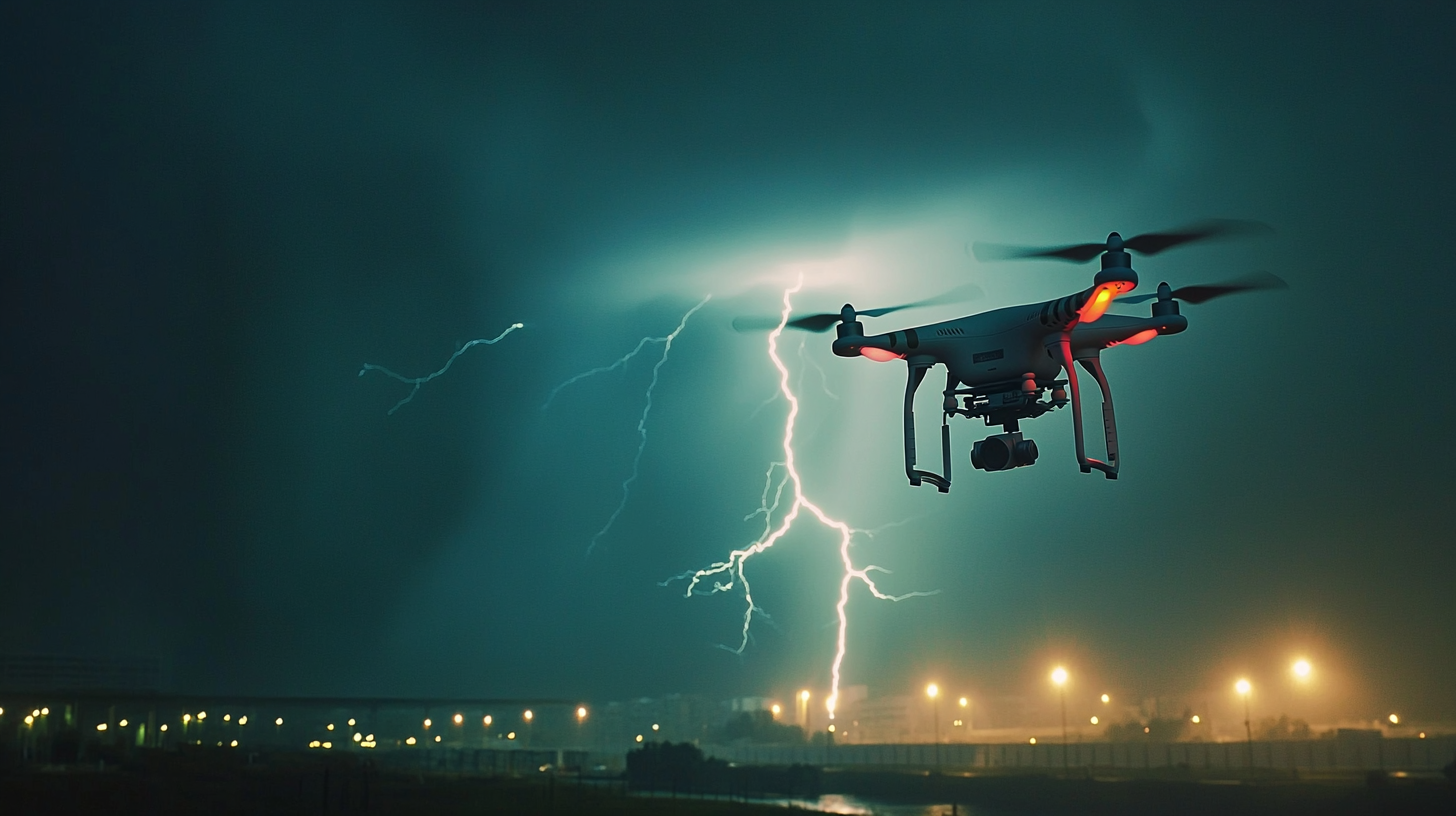Japan has developed a groundbreaking drone that acts as a flying lightning rod. Its mission? To intercept lightning bolts before they strike the ground, protecting infrastructure and people from fires, blackouts, and other damage caused by increasingly frequent and intense storms.
It may sound like science fiction, but it’s real. The Japanese company NTT (Nippon Telegraph and Telephone) has successfully tested a drone capable of attracting and guiding lightning. Designed to fly over urban areas during thunderstorms, the drone acts as a mobile lightning rod, intercepting atmospheric discharges before they reach the ground.
The First Test: Lightning Hits the Drone, Which Stays Airborne
The prototype was tested on December 13, 2024, in Shimane Prefecture, Japan, under actual storm conditions. As a thunderstorm approached, the drone ascended to 300 meters carrying a conductive wire connected to a ground-based switch. Once activated, the system increased the local electric field enough to trigger a lightning discharge.
The bolt struck the cable, and the current was safely channeled to the ground. Despite the intense impact, the drone remained in flight, sustaining only minor exterior damage. This was made possible by a built-in Faraday cage, which protected the internal electronics. According to NTT, the drone can withstand discharges up to five times more powerful.
Not a New Idea, But Now It’s Mobile and Durable
The concept of guiding lightning has been explored for decades. More recently, researchers have used laser pulses to ionize the air and create preferred lightning paths. However, laser systems are stationary, expensive, and not easily deployable.
The true innovation of the Japanese drone lies in its mobility and durability. It can be rapidly deployed in high-risk areas, attract lightning, and continue functioning after the strike. NTT now aims to use it to protect antennas, electrical substations, and telecom networks, especially in remote or mountainous regions.
Could Lightning Become a Future Energy Source?
Beyond protection, the project has even more ambitious goals: turning lightning into usable energy. With approximately 6,000 lightning strikes hitting Earth every minute, the amount of energy released is staggering. If it could be captured and fed into the power grid, it could revolutionize sustainable energy production.
However, this remains an intriguing but currently impractical idea. Present-day energy storage systems are not capable of handling such massive and instantaneous discharges. The main challenge is to safely store this enormous energy in mere milliseconds.
A Small Step Today, a Potential Revolution Tomorrow
We may still be far from Back to the Future’s famous DeLorean, powered by a lightning bolt to travel through time. But if a drone today can attract a lightning strike and survive, perhaps tomorrow we really could harness the power of the sky no Doc Brown required.






